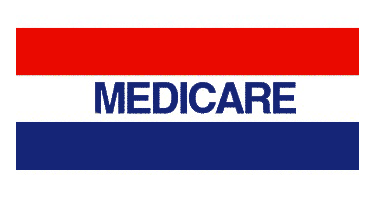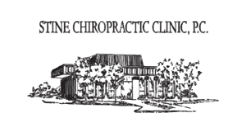Chiropractic Conditions Treated
Chiropractic Conditions Treated at Stine Chiropractic Clinic in Fredericksburg, VA
Neck Pain
When this pain gets in the way of your everyday life it’s necessary to get evaluated and treated to avoid progression into a chronic condition. The doctors at Stine Chiropractic are here for you to let them evaluate and treat your specific condition today!
Back Pain
Here at Stine Chiropractic the doctors work with you to find your diagnosis and the best up to date treatment to prevent progression through palliative modalities and active rehabilitation services.
Headaches & Migraines
Headaches can vary from mild aching to severe debilitating pain, that can be on both or one side of the head. They tend to last anywhere from 30 minutes to days. There are neck conditions, muscle strains or spasms that will contribute or even cause your headaches. Some of the long list of headaches are: cluster headaches, sinus headaches, temporal arteritis, cervicogenic headaches, and tension headaches. There are also more serious conditions that can present with headache so it’s always important to have them evaluated.
Migraines and cluster headaches may have accompanied symptoms called a prodrome or aura.
- Prodrome = a symptom indicative of an approaching disease. (Fatigue, malaise, lethargy, stiff neck, mood changes, anorexia, food cravings, chilled feeling, diarrhea or constipation, fluid retention, increased frequency of urination) Occur 24-48 hrs prior to HA onset. A prodrome may be associated with a number of different headaches and/or systemic diseases.
- Aura = focal neurological (sensory, motor, language) symptoms typically evolving over a period of 5 to 60 minutes (usually < 20 min). They usually proceed a headache but onset of the aura may occur simultaneously with the onset of the pain, and some patients experience aura without headache Most auras are associated with the visual system {flashes of color, wavy lines, shimmering spots, scintillations, visual distortions, hallucinations, or visual loss} or auditory disturbances {unusual sounds or tinnitus, sometimes hearing loss}, however the patient may experience paresthesias, hemiparesis (paralyzed on one side of the body), aphasia (inability to make spoken phrases), hypersensitivity, hypoesthesia (decrease in the ability to touch), ataxia (unable to walk), change in level of consciousness, diplopia (double vision), vertigo, etc.
A pathognomonic sign of migraine is a certain type of aura called a Fortification Spectra. In fortification spectra, first the vision blurs, and then there appears a slowly expanding paracentral scotoma (blind spot), surrounded by luminous scintillating geometric forms, which enlarges and moves laterally until it disappears outside the peripheral vision. This takes between 10-30 minutes.
Other less serious headaches like cervicogenic and tension headaches can be brought on by stress and prolonged or sustained postures. These occur more often in females. Tension type is usually on both sides and the pain can be described as a squeezing sensation in a headband like distribution. Cervicogenic headaches are caused by the bones in the cervical spine and symptoms are increased with certain motions.
Treatment used may be physical therapy modalities, getting rid of any triggers, or taking steps to reduce stress. If you have never tried chiropractic care, you owe it to yourself to see a chiropractor to help manage your pain.
Myalgia / Fibromyalgia
Your condition may be due to an infection; Lyme disease, influenza, Rocky Mountain spotted fever, etc. Drug related; statins, fibrates, ACE inhibitors, etc. Blood tests may be necessary in these instances. Diet analysis may also be beneficial.
Stine Chiropractic Clinic is equipped to help you find the answer to your health problems so you don’t have to live with the pain.
Herniated Disc
The most common disc injury is the lumbar region of the spine because this is the area that carries most of the load bearing compression. Your body also leaves this area exposed to disc protrusion because the posterior ligamentous tissues taper off as it gets into the lumbar spine. With a protrusion prognosis is the best because the inner disc material has not exited outside of the fibrous outer rings. The extrusion prognosis is slightly different due to the disc material making it out farther than the protrusion leaving an inflammatory response at the nerve root causing you distal leg symptoms. The doctors at Stine Chiropractic Clinic are equipped with the experience and tools to get you the symptom relief you desire typically within 2 weeks depending on the type of discal problem (protrusion-bulge or extrusion-rupture). It’s important to get in as soon as symptoms start to get the best prognosis and response period.
Orthopedics & Sports Injuries
Sciatica
This is one of the most common conditions seen by a chiropractic orthopedist. What is sciatica? Sciatica in a general sense is leg pain. This however does not tell an individual exactly where the problem is. When experiencing leg pain with or without the presence of lower back pain, it is always good to seek out the help of a specialist, like a chiropractic orthopedist.
Treatment by a board certified chiropractic orthopedist
Treatment consists of first diagnosing the problem as this allows the most successful outcome. The diagnosis begins with an initial patient intake followed by a series of questions called a detailed history.
History
This is where the specialist sits down with the patient asking them specific questions about the patients pain like where the pain is, where it begins and where it travels to, as well as what makes this better and worse. This gives the specialist a good idea of the source of your pain and helps them differentiate the true condition from others that can be closely related.
Exam
The chiropractic orthopedist will do a series of physical tests to rule in or out serious conditions that can create sciatica. These tests use different physical maneuvers that recreate your symptoms or make them better. This keys the specialist in to the true cause of your sciatica and can be used to identify the problem without expensive additional testing like MRI. Testing other things during the examination may help identify other problems that you may not have been aware of prior to the exam like any muscle weakness or loss of sensation that further help the specialist arrive at your particular diagnosis.
Review of findings and education
Your specialist will then at the end of the detailed examination will go over what they have found. This includes why some of the things they did made symptoms better or worse, your specific diagnosis, the name of the condition, and what this means for you and recovery. They will also talk about things that need to be done at home to expedite recovery as well as lifestyle changes to make sure it does not re-occur.
Radiology
This is done in office and consists of plain film x-rays. This can give your specialist a better idea of any other complicating factors that may be going on in the spine and help them determine whether other conditions may be playing a role in the pain you are experiencing. When x-rays are taken your specialist always interprets these prior to treatment and will go over the findings with you prior to treatment as well as give you the option of seeing them while explaining the findings and implications. While x-ray is not always performed, it is always a good idea to get a good look at the spine prior to manipulation, if this is what your specialist plans to use for treatment. MRI may be recommended in some cases where additional visualization of soft tissues is necessary like discs, tendons, or ligaments.
Treatment
Treatment for sciatica usually consists of many different modalities that the specialist has access to on site. This includes:
- Electrical muscle stim: this will release endorphins and enkephalins which are your body’s own pain killers and helps with the pain you are experiencing. This also helps relax the muscles that may be contributing to your pain.
- Ultrasound: this uses sound waves to penetrate the deeper tissues of the body and is considered the deepest heat you can get. This helps with healing of soft tissues including muscle tendon and ligaments.
- Spinal decompression and flexion distraction: this is something that can be used to decompress the joints of the spine and hydrate the discs of the spine. It can also alleviate the narrowing of the hole where nerves come through.
- Manipulation: if your specialist decides to use this for sciatica it is done to help with pain sensitive structures in the spine that are contributing to your condition.
- Stretching and myofascial release: May be used for your specific condition in order to help alleviate tight muscles in the area that may contribute to your pain. It is important to note here that stretching for sciatica is not always a good idea and in order to perform stretches safely, a diagnosis should be reached prior to doing so. This is why your diagnosis is the first step to your treatment by a chiropractic orthopedist.
Formulating a treatment plan
After the diagnosis and initial treatment of sciatica, it is important to formulate a treatment plan that works for your condition. This consists of more visits to treat the problem at its source. There will also be things at home that you will have to do as well to treat the condition. It is always best to follow the prescribed treatment plan as prescribed so that your specialist can monitor and gain additional information about the progression of your condition. This ensures safe resolution. When treating an acute injury it is always best to start with a high frequency treatment plan. This is because each visits improvement builds on the last. In the initial stages of healing, the process is slow and when frequency is high it allows the healing process to continue in an expedited fashion. If something keeps you from following the treatment plan as prescribed and time between visits is lengthened, especially in the first two weeks, then any improvement seen on the previous visit can be quickly lost. It is always best to stick with the prescribed frequency in the first 2-3 week time frame as this is when the most amount of improvement happens. After this frequency becomes less crucial, and working with your specialist on a different frequency may be allowed.
Other treatments for sciatica
Other forms of treatment for sciatica may involve exercise, or injections. It is important to note that exercise is not always the correct treatment for certain conditions that fall under the large umbrella of sciatica diagnosis, and should only be performed after thorough evaluation by a specialist. Injections can be done to the areas that are painful and come in many different forms. There are injections aimed at the bursa, joints of the spine, and epidural space. All of these injections are done for different diagnoses and should be considered carefully. It is important that proper diagnosis of the cause be determined before going this route. When we inject a steroid into the body, pain may subside but healing may be prolonged. So even though the pain resolves with this type of treatment, it may prolong the actual healing response. This is because inflammation is a part of the healing response, it’s what the body uses to clean up the damaged tissue by sending these inflammatory cells to repair the area with the side effect of pain. Sending a steroid into the area stops these inflammatory cells from being produced and alleviates the side effect of pain. Without these cells now, the healing response is altered and may take longer to heal. The other thing to consider is that some of these injections when performed, may not alleviate any pain. This is likely due to targeting the wrong pain sensitive tissue. This offers more information on what can now be ruled out as far as pain source, but also has exposed you to the risks of injection without benefit. A chiropractic orthopedist is able to use these types of treatment if necessary. Determination of which tissue type is injured and which type of injection should be performed is crucial.
More information on sciatica
If you would like to read more on sciatica check this link out.

Major Insurances Accepted






